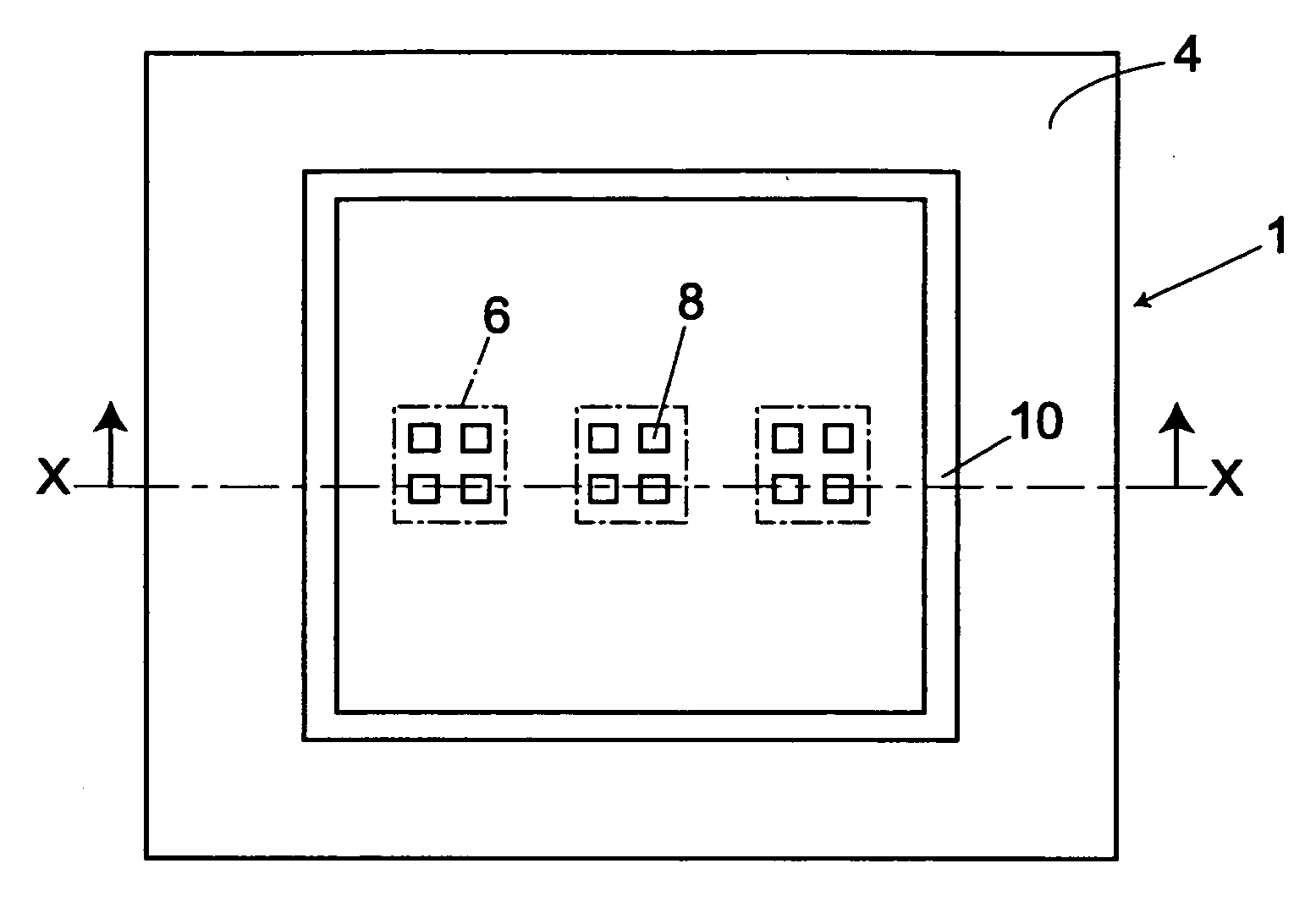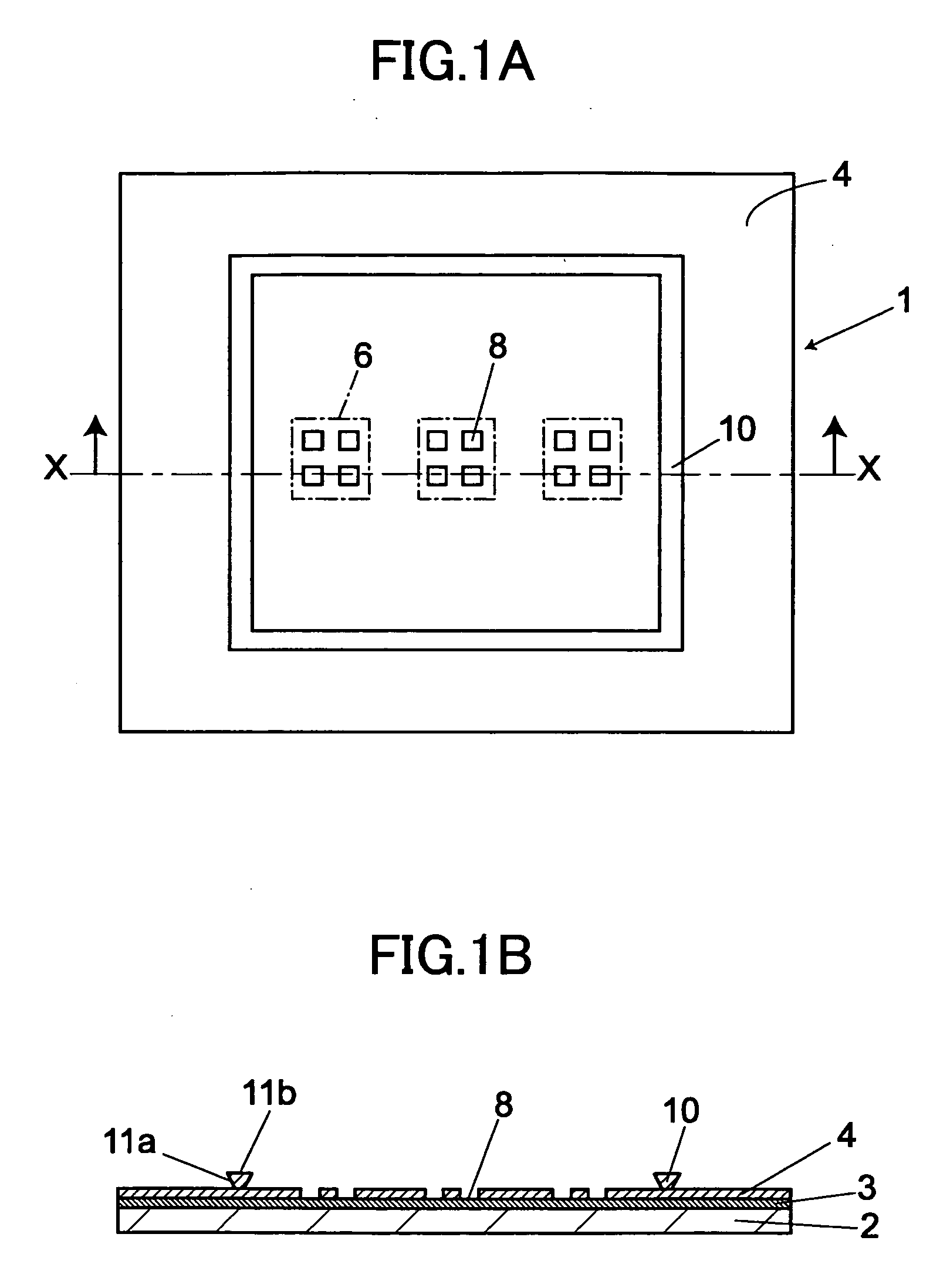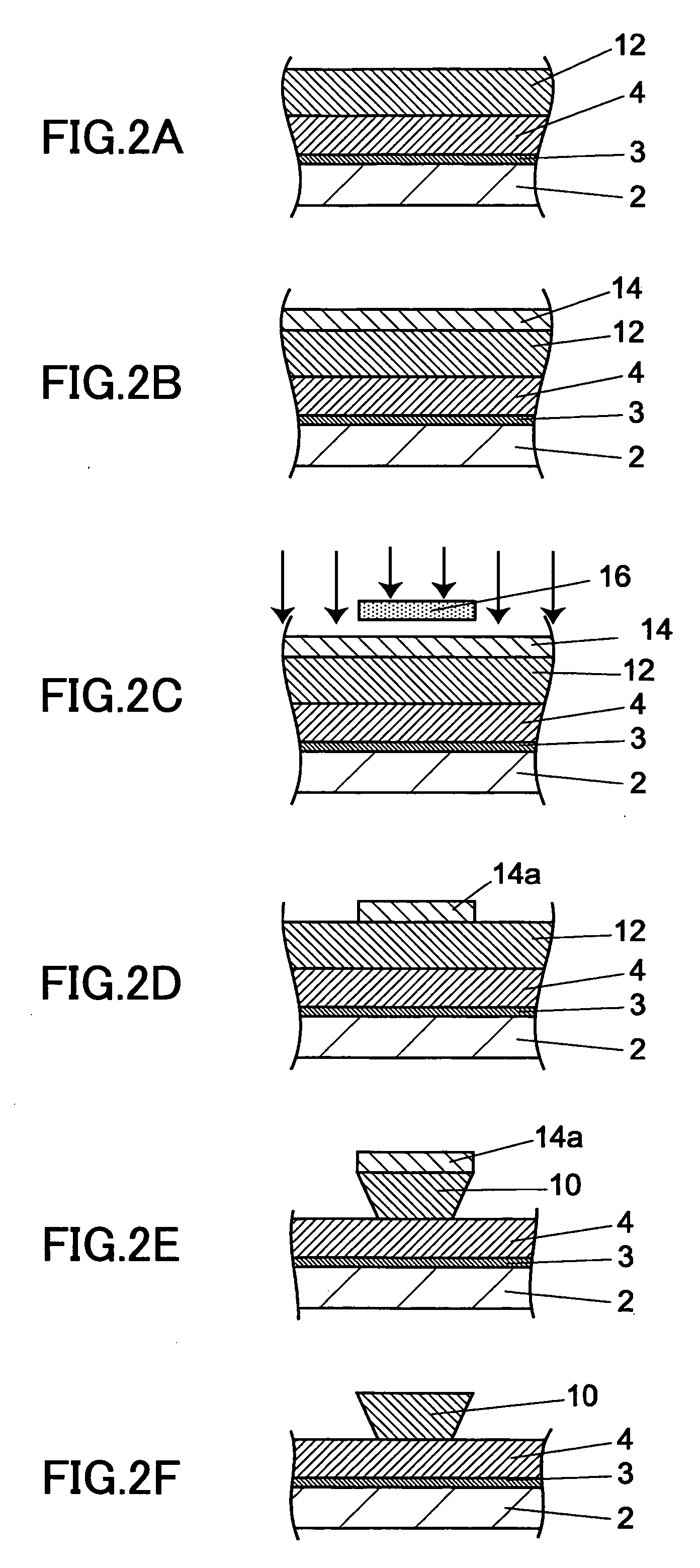Printed circuit board, method of producing the same, and electronic unit
a technology of printed circuit boards and printed circuits, applied in the direction of resist details, second resist masks, semiconductor/solid-state device details, etc., can solve the problems of inability to manufacture resin, inability to reduce the thickness of circuits, and inability to reduce circuit thickness
- Summary
- Abstract
- Description
- Claims
- Application Information
AI Technical Summary
Benefits of technology
Problems solved by technology
Method used
Image
Examples
first embodiment
[0049]FIG. 1A is a plan view of a printed circuit board according to a first embodiment of the present invention.
[0050]FIG. 1B is a cross-sectional view of the printed circuit board in FIG. 1A along an X-X line in FIG. 1A.
[0051] As illustrated in FIG. 1A, in a printed circuit board 1, a conductive pattern 3 is formed on an insulating substrate 2 by patterning a metal layer on the insulating substrate 2, and a solder resist 4 is formed on the conductive pattern 3 as an insulating material layer. The solder resist 4 has functions of preventing degradation of the printed circuit board 1 caused by oxidation of the conductive pattern 3, and preventing a short between the solder applied when mounting electronic parts and electrodes nearby or the conductive pattern 3. For example, the solder resist 4 is made from PSR-4000 G30, manufactured by Taiyo Ink Co.
[0052] In the printed circuit board 1, for example, three mounting areas 6 are provided in the printed circuit board 1 for mounting t...
second embodiment
[0078]FIG. 4A is a plan view of a printed circuit board according to a second embodiment of the present invention.
[0079]FIG. 4B is a cross-sectional view of the printed circuit board in FIG. 4A along a Y-Y line in FIG. 4A.
[0080] As illustrated in FIG. 4A, in a printed circuit board 20, a conductive pattern 23 is formed on an insulating substrate 22, and a solder resist 24 is formed in the peripheral region of mounting areas 26, where electronic parts (such as, semiconductor devices) are to be mounted. The solder resist 24 has functions of preventing degradation of the printed circuit board 20 caused by oxidation of the conductive pattern 23, and preventing a short between the solder applied when mounting the electronic parts and electrodes nearby or the conductive pattern 3.
[0081] In the printed circuit board 20, for example, three mounting areas 26 are provided, and three groups of electrodes 28, each of which groups includes four electrodes 28, are formed in the three mounting ...
third embodiment
[0090]FIG. 5A is a cross-sectional view of an electronic unit according to a third embodiment of the present invention.
[0091]FIG. 5B is an enlarged cross-sectional view of a portion of the electronic unit indicated by a dashed circle in FIG. 5A.
[0092] In the following descriptions, the same reference numbers are assigned to the same elements as those described in the previous embodiments, and overlapping descriptions are omitted.
[0093] In FIG. 5A, three electronic parts 32 are mounted on the mounting areas 26 of the printed circuit board 1. For example, the electronic parts 32 are flip chip semiconductor devices, in each of which connection terminals (not illustrated) are provided on the back surface. The connection terminals on the back surface of each of the electronic parts 32 are electrically connected to the mounting electrodes 8 on the printed circuit board 1 through solder 34, and the electronic parts 32 are electrically connected to external electric devices through the c...
PUM
 Login to View More
Login to View More Abstract
Description
Claims
Application Information
 Login to View More
Login to View More - R&D
- Intellectual Property
- Life Sciences
- Materials
- Tech Scout
- Unparalleled Data Quality
- Higher Quality Content
- 60% Fewer Hallucinations
Browse by: Latest US Patents, China's latest patents, Technical Efficacy Thesaurus, Application Domain, Technology Topic, Popular Technical Reports.
© 2025 PatSnap. All rights reserved.Legal|Privacy policy|Modern Slavery Act Transparency Statement|Sitemap|About US| Contact US: help@patsnap.com



